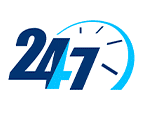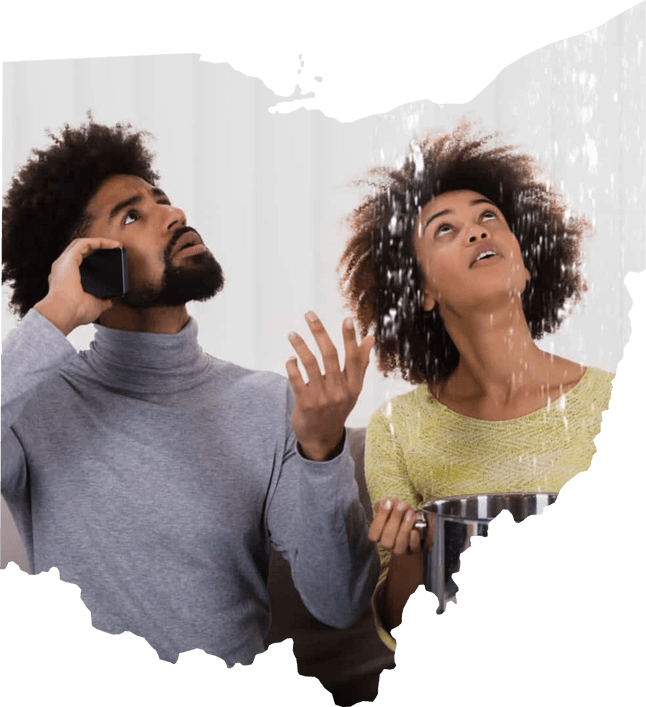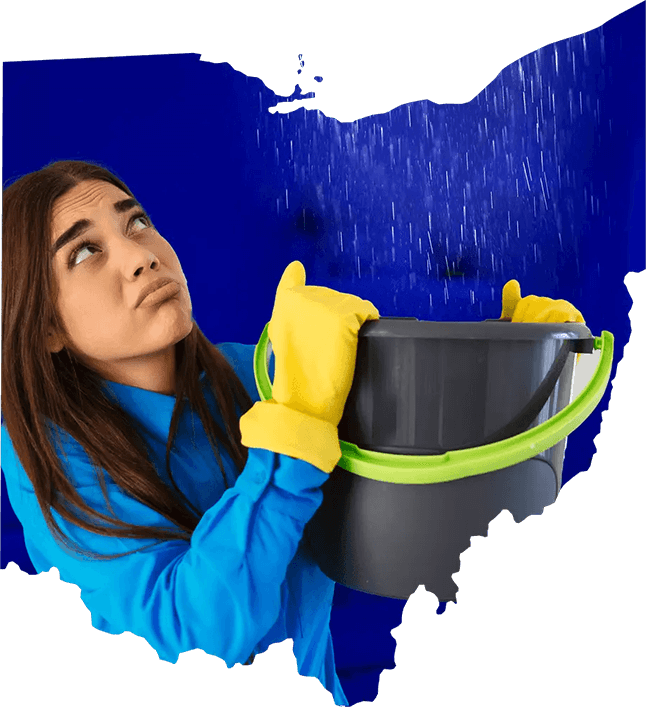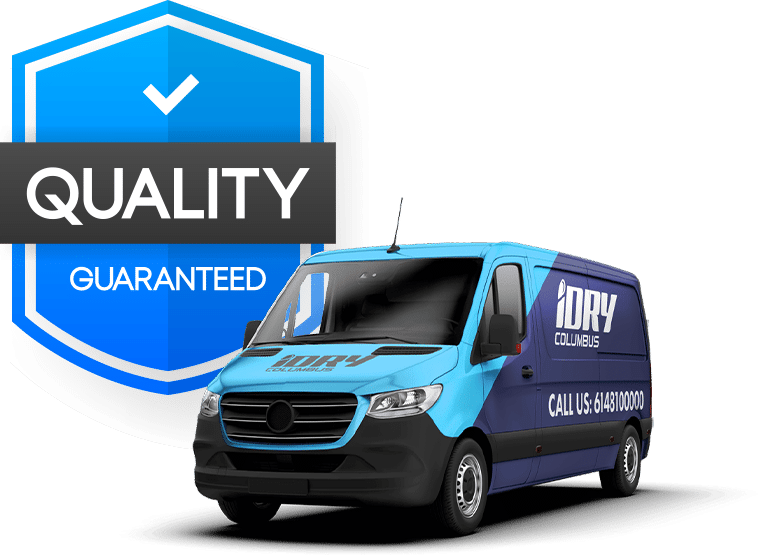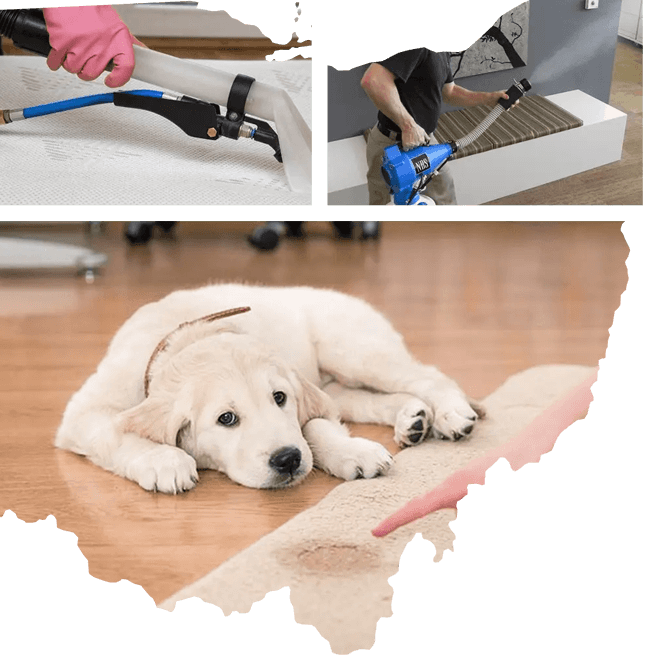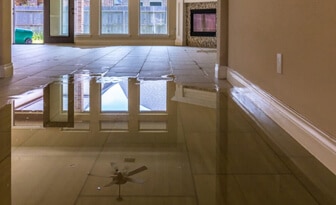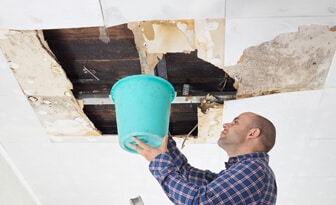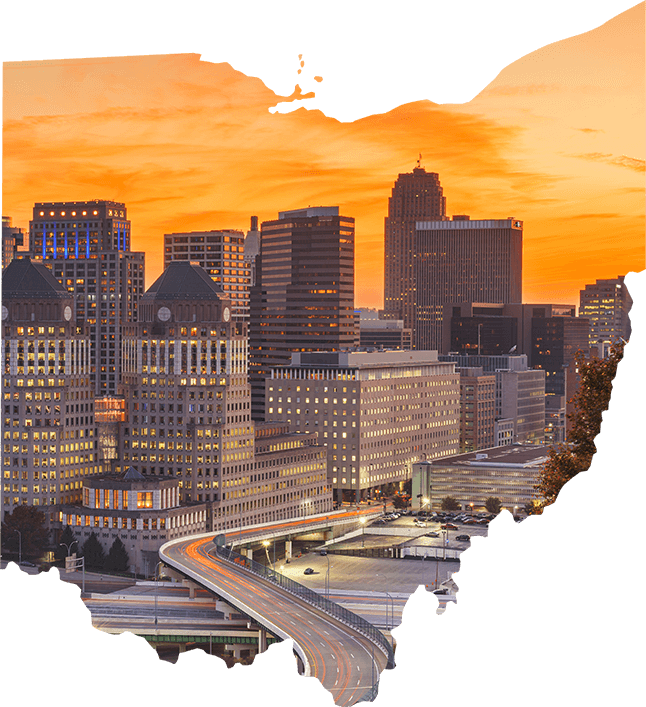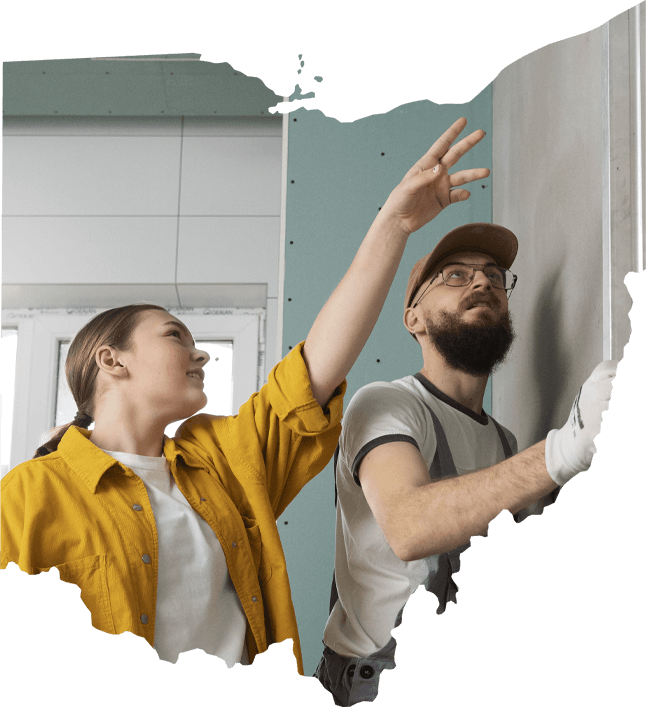iDry Columbus: Water, Mold and Fire Damage Restoration
Serving Central Ohio with Expert Residential & Commercial Remediation Services
Contact Us for a Free Property Damage Inspection
24/7 Emergency Restoration Services
Licensed, Insured & Dedicated
Free Estimates – Xactimate™ Technology
Schedule a
Free Property
Damage Inspection Today!
24/7 Emergency Restoration Services
Fully Licensed, Insured & Dedicated
Free Estimates – Xactimate™ Technology
Welcome to iDry Columbus
At iDry Columbus, our local roots in Columbus, Ohio, run deep. With over 20 years in the community, we’ve dedicated ourselves to solving water damage, flooded basements, and mold issues. Our skilled team, equipped with top-notch gear, tackles each restoration project with the same care and dedication.
Being a family-run business, we feel the joy of a home restored and the relief of a business owner getting back on track. Our neighbors in Columbus trust us time and again with their needs.
Choosing iDry Columbus is not just about hiring a service; it’s about partnering with a team that values the heartbeat of this city. We’re here to deliver exceptional service and results to our residential and commercial neighbors—a promise from our family to yours.
Water and Fire Damage Restoration in Columbus - iDry Columbus
24/7 Emergency Services
iDry Columbus stands out in an unchanging industry, offering a level of personalized attention that you won’t get from larger franchise restoration companies. Home and business owners have the right to expect top-notch customer service, expertise, and experience – all part of our commitment to ensuring your home or business is restored quickly and competently.
Our mission statement:
- Do what is right in restoration.
- Do what is right for our client, not just an insurance company or adjuster.
- Approach every client with common courtesy.
- Apply our experience to everything we do.
- Be transparent in everything we do.
- Treat every home and business as we would expect of ourselves.
iDry Columbus: Immediate Assistance for Property Recovery from Mold, Fire, and Water Damage
When disaster strikes, iDry Columbus is your reliable partner for property damage cleanup and restoration services in Columbus, Ohio, and surrounding areas. Our rapid response team is available 24/7 to help you minimize damage and restore your property as quickly as possible. Our emergency restoration services include:
Round-the-Clock Property Restoration
Facing a sudden water, mold, or fire problem? iDry Columbus is ready 24/7 to step in. We quickly tackle your emergency, ensuring a fast and effective property damage clean-up. From assessing damage to the final cleaning, we’ve got every step covered. Need urgent help? Check Out Our Emergency Restoration Services for reliable, speedy assistance
Immediate Water Damage Response
For quick help with water damage, turn to iDry Columbus. We’re ready 24/7 to tackle flooding and leaks, ensuring fast cleanup and recovery. Count on us for all your water damage needs, from drying out to fixing up. Learn more about our Water Damage Services for reliable, speedy help when you need it most.
24/7 Emergency Water Extraction Services
For situations with serious water buildup, our water extraction service at iDry Columbus is what you need. We handle everything from overflowing basements to major leaks, using the latest technology to get the water out fast and efficiently. Check out our Water Extraction process to see how we can help get your place back to dry and safe.
Storm Damage Repair and Recovery
When storms hit hard, count on iDry Columbus for storm damage restoration. We’re equipped to handle everything from minor wind damage to major flooding. Our team works quickly to repair and restore your home, ensuring your safety and comfort. Learn more about our Storm Damage Restoration and how we can help you recover from nature’s surprises.
We'll be There When You Need Us, Providing
Top-Quality Water, Fire and Mold Damage Cleanup & Repair Services
iDry Columbus offers comprehensive property damage restoration services for residential and commercial properties in Columbus, Ohio, and surrounding areas. Our certified experts utilize the latest technology and industry best practices to effectively restore your property to its original condition. Our property damage restoration services include:
Rapid Flooded Basement Cleanup Services
We act swiftly and efficiently to clean up flooded basements, a vital component of our flood services, preventing additional damage to your property and reducing the risk of mold growth. Interested in how we manage these situations? Learn more about our fast and efficient flooded basement cleanup services.
Handling Home Floods from Burst Pipes
Facing a home flood from a burst pipe? iDry Columbus offers quick, reliable solutions. Our team specializes in water extraction, damage assessment, and restoration to tackle these emergencies. We act swiftly to minimize water damage, prevent mold growth, and restore your property’s integrity. Discover our approach to Burst Pipe Flood Situations and how we can bring your space back to its pre-damage condition
Restoring Carpets After Water Damage
When your carpet suffers water damage, iDry Columbus has the expertise to fix it. Our team handles water removal, drying, and restoring carpets to their pre-damage state. We ensure thorough cleaning and quick drying to prevent mold and preserve your carpet’s quality. Learn about our Carpet Water Damage Restoration and how we can bring life back to your water-damaged carpets.
Drying Out Your Home or Office
To quickly dry your home or office after water damage, iDry Columbus uses high-velocity air movers, fans, and low-grain dehumidifiers for complete moisture removal, protecting your space from further harm and mold. Our team ensures every part of your property, including walls and floors, is thoroughly dried, ensuring a safe, dry environment. Learn about our drying services.
Sewage Spill and Overflow Restoration
iDry Columbus provides professional cleanup services to handle this challenging situation safely. Our team is equipped with the necessary tools and expertise to clean, disinfect, and restore areas affected by sewage overflow. We prioritize health and safety while efficiently restoring your space. Explore our Sewage Backup Cleanup Services for reliable and thorough assistance.
Specialized Water Damage Repair
Our team provides specialized water damage repair, ensuring the restoration of your property’s structure, contents, and aesthetics after water incidents. Learn more about our expert water damage repair services.
Expert Fire Damage Restoration
When it comes to fire damage restoration, iDry Columbus is your trusted partner. Our experienced team is equipped to handle the aftermath of a fire incident, providing comprehensive restoration services to bring your property back to its pre-fire condition. From structural repairs to smoke and soot removal, we have the expertise and resources to handle every aspect of fire damage restoration. Let us restore your peace of mind and help you rebuild. Contact us today to learn more about our reliable fire damage restoration services.
Expert Water Mitigation Columbus
Experiencing unexpected water issues? Dive into our specialized water mitigation services at iDry Columbus. Discover how our dedicated team tackles water challenges head-on, safeguarding your property’s value and health. Click through to our water mitigation page and let us restore peace to your space.
Guaranteed Quality:
Our Commitment to
Excellence
At iDry Columbus, we stand firmly behind the superior quality of our services and the expertise of our professional team. We’re dedicated to providing effective, efficient, and thorough restoration and cleanup services that not only meet but exceed your expectations and industry standards. Our commitment to excellence is backed by a comprehensive satisfaction guarantee that prioritizes your peace of mind. To us, a job isn’t complete until you’re fully satisfied.
Explore Our Complete Mold Inspection and Removal Services at iDry Columbus
At iDry Columbus, our mold services are designed for your health and peace of mind. We start by thoroughly inspecting your property to assess the mold situation. Then, our experienced team takes swift action to remove the mold, ensuring it won’t come back. Breathe easy with our mold-free solutions; we’re here to make your environment healthy and worry-free. Discover what sets our mold inspection and removal services apart.
No-Cost Mold Inspection Services
iDry Columbus offers free mold inspections for property owners in Columbus, Ohio, and surrounding areas. Our certified professionals are committed to detecting and addressing mold issues, providing complete solutions for a safe and healthy environment. Explore our all-inclusive mold inspection and remediation services.
Professional Mold Removal Done Right
Our certified professionals are experts in not just removing mold but also in making sure it doesn’t return. We’re dedicated to creating a safe, healthy environment on your property. Want to know more? Explore how we ensure effective and lasting mold removal.
Expert Attic Mold Removal Services
Our expert team at iDry Columbus excels at addressing mold challenges in attics, effectively dealing with hard-to-reach areas to ensure your home remains clean and healthy. Learn about our specialized services for eradicating attic mold and safeguarding your living spaces
Specialized Crawlspace Mold Removal Services
At iDry Columbus, we handle the tough job of removing mold from crawlspaces. These hidden spots can be tricky, but our team is up to the task of making sure your entire home is safe and healthy. Check out how we tackle mold in crawlspaces to keep your living spaces fresh and clean.
Green Mold Remediation: Safe & Sustainable Solutions
Our earth-friendly mold remediation services offer a safer, environmentally-friendly approach to mold treatment. Prioritizing your health and the planet, we use non-toxic, sustainable methods to ensure your home is mold-free. Learn about our Eco-Safe Mold Solutions, where effectiveness meets natural care.
iDry Columbus: Local Leaders in Water Damage Repair, Mold Remediation, and Odor Control Services
Unwanted odors aren’t just unpleasant, they can impact your home’s comfort and value. At iDry Columbus, we’re your trusted partner for eliminating stubborn odors [from smoke, pets, cooking, mold, and more] and significantly improving indoor air quality.
Breathe easy and enjoy a fresh, inviting space – explore how iDry Columbus’s odor removal services can transform your home!
Say Goodbye to Stubborn Odors
Don’t let lingering odors ruin your home. iDry Columbus offers a comprehensive arsenal of odor removal solutions for a truly fresh and healthy living space.
- HEPA Filtration: Captures airborne particles like dust and allergens that contribute to odors.
- Carbon Filtration: Effectively neutralizes strong odors from smoke, pets, and cooking.
- Thermal fogging: Disperses a powerful deodorizing fog to reach hidden spaces and eliminate odors at their source.
- Ozone & Hydroxyl Treatment: Advanced oxidation process that breaks down odor molecules for a long-lasting fresh scent.
- Chlorine Dioxide Treatment: Eliminates deep-seated odors like mildew and biohazards.
From everyday annoyances to persistent problems, trust iDry Columbus to banish odors and restore the pure air your home deserves.
iDry Columbus Water, Fire & Mold Damage Restoration Services
At iDry Columbus, we’ve built our reputation on being more than just a restoration company. Serving Columbus, Ohio, and nearby communities has been a privilege. With a foundation of over two decades in the industry, we take immense pride in delivering nothing but the best for our clients.
I invite you to delve deeper into our story and stay connected through our regularly updated blog.
Wide Service Area for
Reliable Restoration
At iDry Columbus, we are dedicated to serving a broad range of locations in the Columbus region, ensuring that we can meet your restoration needs wherever you are located. Discover our guaranteed service area and let us become your trusted restoration partner. Explore our wide service area today.
Stay Updated with
Our Informative Blog
Stay informed about the latest news, useful tips, and industry insights by following our informative blog. Explore valuable resources and expand your knowledge on restoration, cleaning, and maintenance topics. Visit our blog here to stay connected and stay informed with iDry Columbus.
Contact Us for Your
Restoration Needs
Our friendly team is here to assist you with your restoration needs. Whether you want to discuss your specific requirements, schedule a free property inspection, or request a quote, we’re ready to help. Get in touch with us today and experience our reliable and professional service. Contact us here to start the conversation.
Why Choose iDry Columbus - Water Damage Cleanup
When it comes to property restoration services, iDry Columbus is the premier choice for homeowners and businesses in Columbus, Ohio, and the surrounding areas. Our reputation is built on the following core principles:
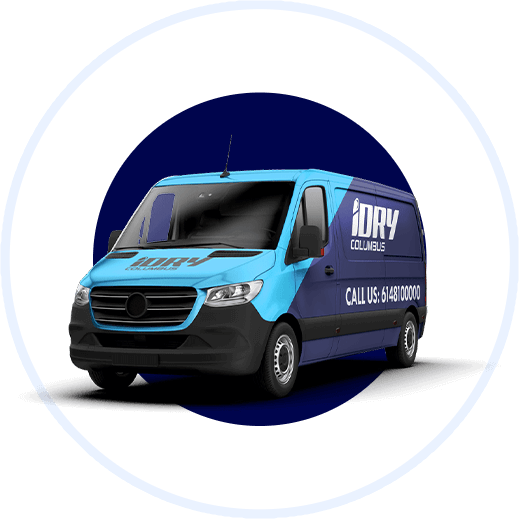
Rapid Response
We recognize the urgency of addressing water damage and other restoration needs. Our dedicated team is available 24/7 to respond promptly, mitigating further damage to your property.
Customer Satisfaction
At iDry Columbus, our client’s needs are our top priority. We go above and beyond to exceed their expectations, resulting in numerous positive testimonials and long-standing relationships with our valued clients.
Experience and
ExpertiseWith more than two decades in the restoration industry under our belt, our adept team brings a wealth of knowledge and proficiency to tackle restoration projects, big or small
Advanced Techniques
and EquipmentWe employ state-of-the-art technology and industry best practices to ensure the most effective and efficient restoration process for your property. Our commitment to staying abreast of the latest advancements in the field enables us to deliver exceptional results.
Local Property Damage Resources in Columbus, Ohio
Discover local resources in Columbus, Ohio, that provide valuable information and guidance on property damage. Explore links to the Columbus Public Health Department and the City of Columbus Department of Development. Access these resources to gain insights, understand insurance processes, and find assistance for property damage-related concerns in the Columbus area.
Columbus Public Health:
Columbus Public Health provides useful information on various topics, including environmental health and safety. They offer guidance on mold, water damage, and other property-related concerns. Click here to visit their website.
City of Columbus Department of Development:
The City of Columbus Department of Development provides information on building codes, permits, and property maintenance regulations. Click here to visit their website in an effort to understand the requirements and guidelines for property maintenance and restoration in Columbus.
Real Stories from Our Satisfied Customers
At iDry Columbus, we take pride in delivering exceptional service. But don’t just take our word for it. Read on to hear directly from our customers about their experiences. These testimonials reflect our commitment to excellence and our dedication to restoring homes and businesses in Columbus, Ohio, and the surrounding areas.
We're proud to offer a complete line of restoration services
in the following cities and communities:
Thank you for taking the time to learn more about our property restoration services. At iDry Columbus, we value our clients and strive to provide exceptional service in every aspect of our work. Whether it’s water damage restoration, mold remediation, or any of our other services, our experienced team is committed to delivering the best solutions tailored to your specific needs. If you have any further questions or if you require our services, please don’t hesitate to contact us. We’re here to help!
iDry Columbus: Your Trusted Partner in Restoration
iDry Columbus is your trusted partner for all water damage restoration, fire damage, and mold removal needs in Columbus, Ohio, and surrounding communities.
Over the past twenty years, we’ve poured our hearts and souls into mastering the restoration craft. Day or night, we’re here for you, offering top-tier services like emergency water damage repair, mold removal, and odor eradication. And if you’re concerned about mold, we’ll even inspect it for free. Our modern tools and tried-and-true methods ensure your home or business gets back to its best shape quickly and thoroughly.
Count on iDry Columbus for exceptional results in both residential and commercial restoration projects.




